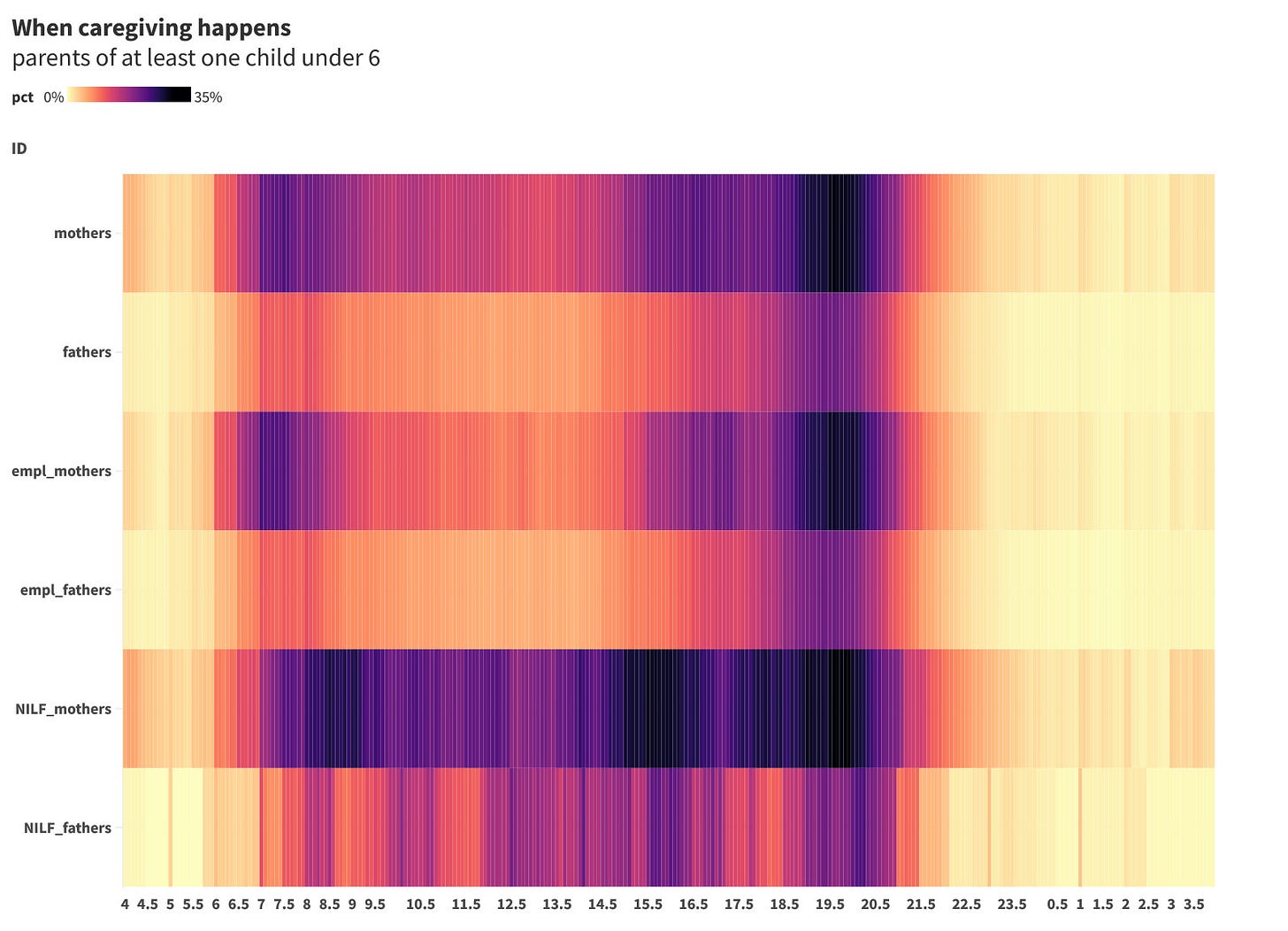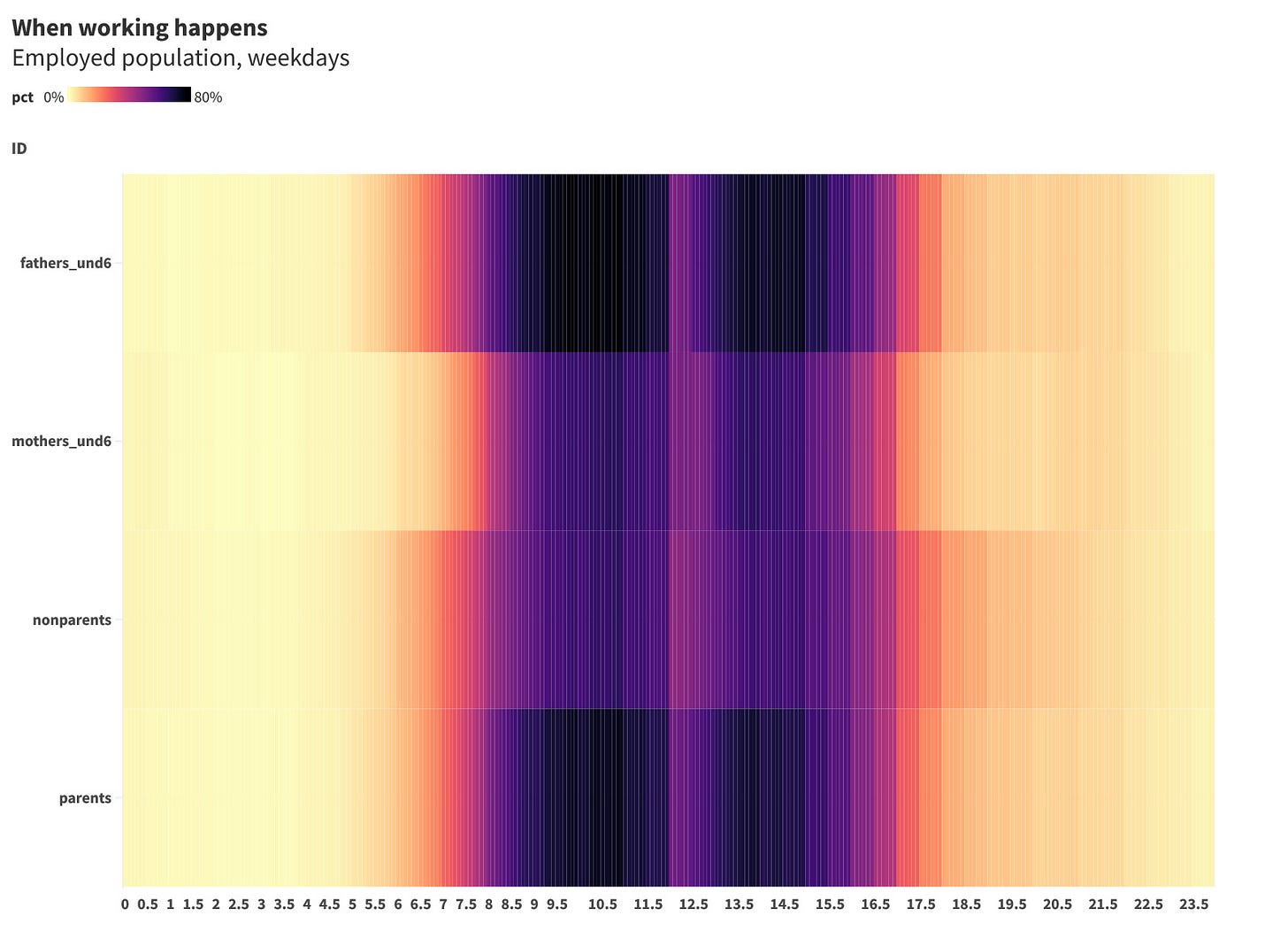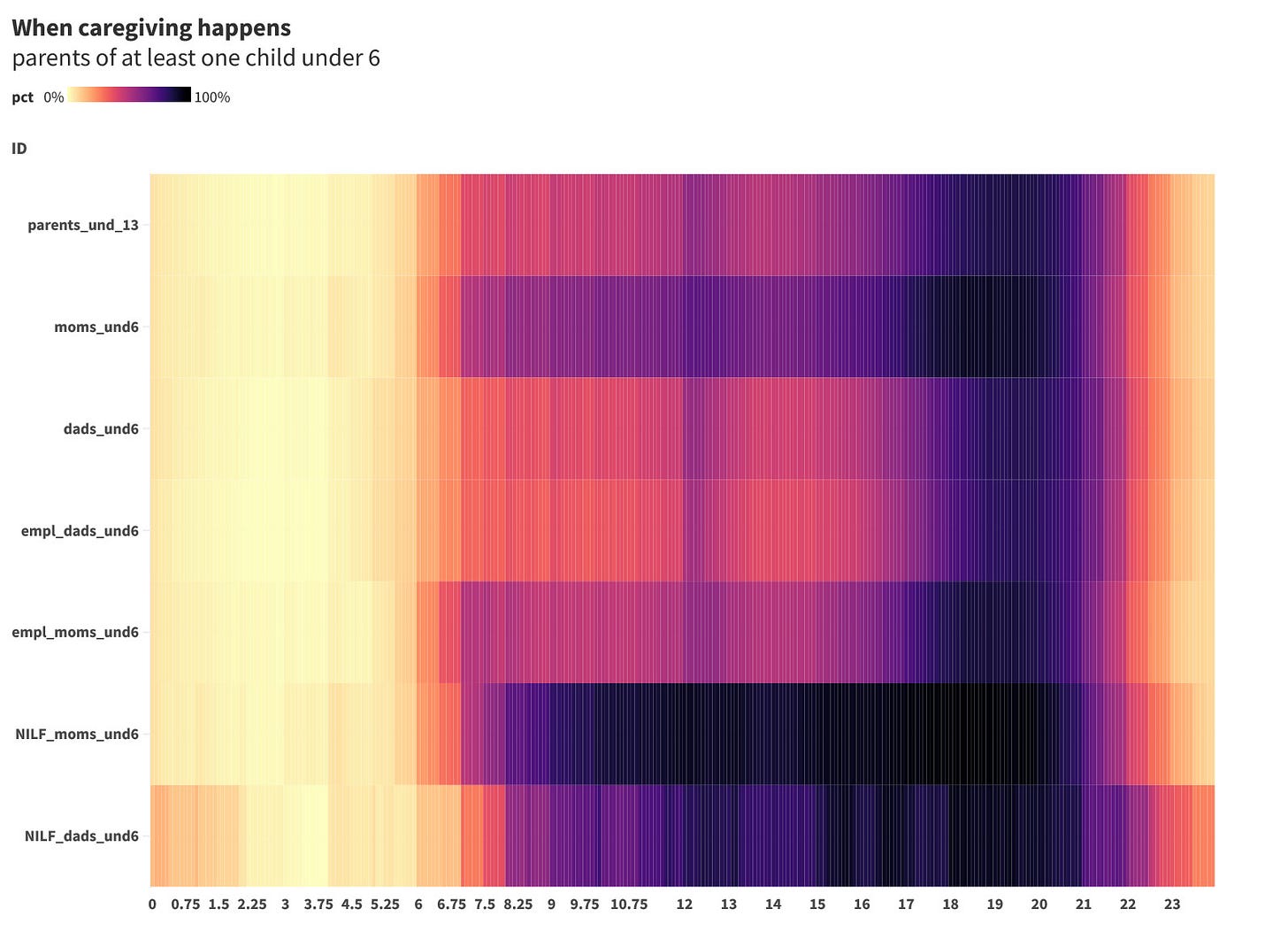The average American in 2018-20231 spent 61 hours per week sleeping. She or he (median age 45, range 15-85) also spent 22 hours working, 21 hours watching television, and 7.7 hours eating and drinking.
Restrict the sample to respondents with at least one child under 132 and median age and sleep both drop — parent respondents have a median age of 37 (range 16-80) and average 60 hours a week of sleep. Working time rises to 30 hours per week, probably because typical child-raising age overlaps with the prime working age, and time spent caring for children jumps from 3 hours per week to 12. Television time drops to 12 hours per week. For comparison, respondents without any children sleep an average of 62 hours per week, watch TV for 24 hours, and work for 18.3 hours.
I’m interested particularly in time use among parents with at least one child under 6. Sleep is higher among mothers (61 hours per week vs. 58 hours) and working is higher among fathers (40 hours vs. 22 hours). Mothers do more caregiving (20 hours vs. 12 hours) and housework (13 hours vs. 9 hours).
I also disaggregated it by employment status. Employed parents (who were present at work in the past week, which excludes parents on parental leave) averaged 58 hours of sleep, 40 hours of work, 14 hours of caregiving, and 10 hours of housework. For parents out of the labor force, it was 64 hours of sleep, 0 hours of work, 25 hours of caregiving, and 17 hours of housework.
I was curious not just how much child care happened, but when it happened. Below is a heat map of how likely a respondent was to report child care during any given 5 minute time segment, broken out by sex and employment status.
Work schedules tend to be concentrated during business hours, though employed moms with children under 6 are generally less likely to report working throughout the day than other parent groups.
I didn’t just want to look at primary child care though, so I built another function that looked at primary and secondary child care together. The heat map below tracks whether respondents reported any primary or secondary child care during a time block.
There were a few other interesting time differences, such as television watching:
and domestic labor:
Skipping 2020 because of weighting issues with that ATUS round make that sample not easily comparable
ATUS only collects secondary childcare for children under 13








